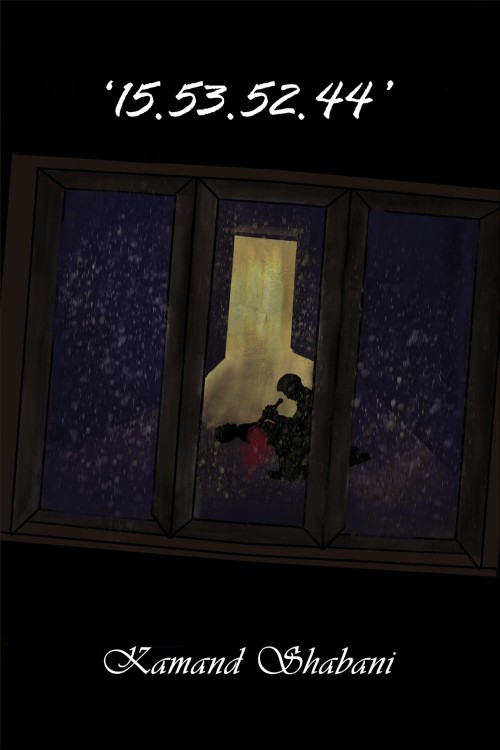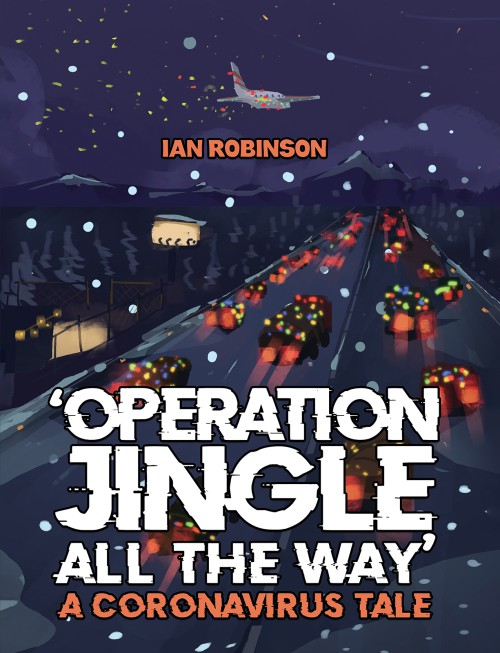-
I Couldn’t Even Look at a Cucumber!
Are you confused with all the health advice and myths around pregnancy? What should I eat or what exercise can I do? Heather is a mum of two young children and runs a wellness business whilst her husband works very long hours. This is her no-holding-back daily account of her third pregnancy as she approaches being 40. This diary will entertain, enlighten and touch you if you are expecting a baby.
The author gives an engaging account of what’s most important during pregnancy, and it’s not all that you think it’ll be. This is a real story of how to survive pregnancy, without any preaching about health and fitness!
A heart-warming and honest story of real-life family challenges.
£8.99 -
Nature’s Universe
Deborah Marie Newbitt, a resident of Christchurch, New Zealand, has been an avid poet since the age of eight, when her Nana Ivy Preston, a renowned author, encouraged her to write. In her debut anthology, Nature’s Universe, Deborah’s passion for the natural world is evident in each of the 30 poems included. Whether read as a family or individually, the poems are infused with detail and insight, reflecting Deborah’s unique perspective on the wonders of nature. Each poem in Nature’s Universe celebrates the beauty and diversity of our planet. So, whether you’re a nature enthusiast or simply looking for a moment of quiet reflection, Nature’s Universe is the perfect read.
£7.99 -
Six Stories of Aphrodite’s Well
This is a story of loss and being taken on a journey of self discovery by people who come from differing walks of life. Some come from a very plain lifestyle while others come from a military life. They are drawn to a place that does not exist in the normal world but one that comes from the past that was dying from the lack of life, these are beings who do not come from our time, but a time of gods and heroes where everything was ruled by the gods. All characters are brought to a place they bring back to life. They stay and bring life to it and the forces that drew them to it, in this place they all find peace. They find a place to live rather than a place to stay.
£12.99 -
"I Must Live!"
On April 30th 1975, South Vietnam fell into the hands of the Communists from the North. Countless Southerners from various backgrounds were being herded into concentration camps. The author was one of them.
“I MUST LIVE!” was the loudest scream I had ever made, which activated my survival instinct when I was tortured to the point of death. Thanks to these three words, I was able to survive in order to recount the painful and horrifying experiences to share with the readers. It was a type of experience that the readers could not possess and no one wished to have.
In short, this is my experience: Human compassion has its limits, but human evil is boundless, especially when that evil is incited and indoctrinated by the Vietnamese Communist Regime.
I hope the book I MUST LIVE! will give readers a deep insight into the darkest side of life, at the same time as to realize that they are the most fortunate people on earth compared to the life of the author.
£12.99 -
"Oneness" The Unity of Opposites: Innovative Transformation
This book is a take on ‘Paradise to Hell’ real-life stories, about real-life under-performing businesses located in real-life countries, operating in real-life industries at a time of real-life challenges in the name of innovative transformation. My life as an international business consultant; Impresario. From India to Indonesia. From Bangladesh to Australia. From Silicone Valley to Malaysia. From the northern hemisphere to the southern hemisphere. From West to East. From on-shore to off-shore. From debt to equity, from low cost, low skilled staff, to high cost, high skilled staff. From single function to multi-function, from life to death. In the life of a ‘dare devil’, frequent flier, international consultant – in what seems like a personal battle with ISIS.
£16.99 -
#vampireproblems
Harriet is a vampire, somewhere around her mid four-hundreds, and is literally a perpetual student. Despite having been around since before the Salem witch trials, she has no idea what she wants to do with the rest of her eternity. During one of her lectures, a gunman comes in and shoots her lecturer, which is annoying because they are short-staffed enough as it is. Although Mr. Jones is a demon and can’t die, his biggest concern is the bullet hole in his head and having to apply for a new passport.
Harriet needs to solve her lecturer’s non-murder, work out who would want to kill someone who can’t die, and somehow make it through her degree. She reluctantly drags along her overenthusiastic friend, the grumpy werewolf who runs the local coffee shop, and a teenage witch hell-bent on revolution.
She isn’t sure how she ended up trying to solve a murder, but anything would be better than writing her dissertation.
£9.99 -
'15.53.52.44'
On a chilling night in February 2019, Bradly Moore, a 32-year-old man, was discovered brutally murdered in his home.
The London police were on the case immediately. But this was no ordinary murder. Moments after his death, an emergency message was sent to eight individuals from Bradly’s contacts. All of them were summoned to the crime scene, making each one a suspect. With eight potential culprits and zero evidence, the investigation seemed nearly impossible.
But among the suspects, one stands out: forensic psychologist, Oliver Johnson. Oliver isn’t just any professional; he was Bradly’s oldest and dearest friend. Pressured by Bradly’s grieving family and driven by personal loss, Oliver is thrust into the center of the inquiry, using his expertise to unravel the case.
As he delves deeper, Oliver grapples with his own whirlwind of emotions, from anxiety to grief. And amidst the chaos of evidence and testimonies, a haunting question remains: Who killed Bradly Moore?
£10.99 -
'King' Kamehameha
What would you do if a pooch suddenly arrived at your castle door and claimed to be the true sovereign?
‘King Kamehameha’ was well and truly settled in his castle, with his paw firmly under the table, and with one Toni as a possible contender to his self-made regal status, there wasn’t a problem; or, so the rascal thought.
Will you cast your undying allegiances to the cuddly, cute ‘King;’ or, will you spare a sympathetic thought, and maybe your vote, for his long-suffering servant?
Who will be the true victor?
£7.99 -
'King' Kamehameha Goes to Hawaii!
‘King’ Kamehameha is finally going to Hawaii on his jollies!
But things do not go smoothly. There is a crown snatcher lurking about, not to mention big, black smouldering cauldrons, gruesome looking savages, and the chief, Ali’i nui who, incidentally, has captured Toni’s eye.
All is not well. ‘King’ Kamehameha’s kingdom and his whole sovereignty are threatened and, to add more gloom to his doom, he is in danger of acquiring a new step-daddy!
Laughter, tears and adventures ensue, but will Kamehameha still be ‘king’ at the end of it all?
£8.99 -
'King' Kamehameha's Dilemmas
‘King’ Kamehameha’s sole interest in further securing his blissful existence is sprinkled with adventures and unavoidable challenges. All is going smoothly until, one day, Toni, his long-suffering owner, decides she wants to find herself a hubby and potential stepdad for ‘His Majesty’. This sets the ‘King’ off on a personal mission, to deter any impending union between an unfortunate victim and Toni, the ‘King’s’ servant.
And, just as ‘His Majesty’ thinks he is safe and secure, lockdown descends on his kingdom. Will Toni succeed in enforcing her strict rules and regulations, when ‘King’ Kamehameha is in the full throes of conjuring up his own rules and regulations?
When Toni is on her deathbed in the hospital, will the ‘King’, at least, think about mending his mischievous ways?
Where will your loyalty, as a subject and reader, be placed?
£9.99 -
'Operation Jingle All The Way' - A Coronavirus Tale
The world was in the grips of the Coronavirus pandemic, and Santa was determined to make Christmas especially magical this year.
Santa read all the children’s letters and wish lists and had decided that this year there would be no naughty list.
Santa and the Elves worked around the clock to make sure the workshop remained open throughout lockdown.
£8.99 -
...She Had Wings
…She Had Wings is a series of short stories for children, designed to open their minds and imagination. The book encourages them to look at life and other people from different perspectives and helps them to face difficulties and weaknesses at their own pace.
The story of …She Had Wings gives an insight into the trials, experiences and adventures involved in some children’s struggles, as well as the determination they show when faced with difficulties. The children are guided with a little help that comes when needed, in a manner unknown to others.
£6.99












